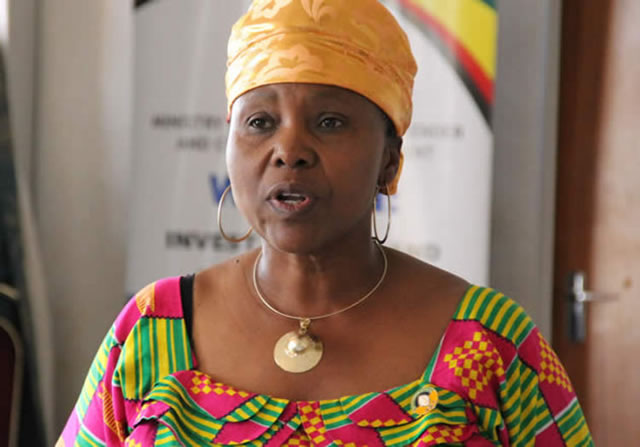Empower girls and young women for a brighter future

Vaidah Mashangwa
EMPOWERED girls grow up to be more responsible young women and citizens.
They are able to make a wide variety of choices in terms of finding the right partners, negotiating for safer sex and career development. Apart from that, they make better economic and political decisions and lead more independent lives than their ill-informed counterparts.
After the realisation that girls and women were being left out in government planning, formulation, implementation, monitoring and evaluation of programmes, the Ministry of Women Affairs, Gender and Community Development developed the first ever National Girls and Young Women’s Empowerment Framework to ensure that girls and young women also take an active role in the social, political, economic and cultural development of the country.
Targeting girls and young women in empowerment initiatives before their first intimate relationships and before dropping out of school helps improve their livelihoods and later their families as adults.
Girls and young women are exposed to different forms of sexual abuse sometimes from relatives because they lack the knowledge, information and expertise to deal with hardships. Empowered girls and young women will be in a position to report any form of violence and are unlikely to get married at tender ages.
The Girls and Young Women’s Empowerment Framework is anchored on five strategic areas namely education, economic empowerment, safety and protection, reproductive health, decision making and leadership. Section 27 (2) of the country’s new constitution says the state must ensure that girls are afforded the same opportunities as boys to obtain education at all levels.
The framework highlights that gender parity is still to be achieved in upper secondary and tertiary levels of education. Statistics show that 3,7 percent of young women aged between 20 and 24 years complete higher secondary education while the proportion of boys is 7,6 percent.
Barriers affecting girls and young women’s access to education include early unplanned pregnancies leading to dropping out of school.
According to the 2010-11 Demographic Health Survey, 24 percent of young women began child bearing in their teens, that is between 15 and 19 years, while 11 percent got married between the age of 20 and 24 years. These girls don’t usually go back to school due to fear of stigmatisation and have to focus on caring for their new babies.
More and more girls and young women are victims of harmful cultural and religious practices as they are forced into early marriages.
In as far as primary education is concerned, 6,6 percent of those without primary education are women, while 4,8 percent are males. On the other hand, 4,1 percent men and 2,9 percent women have completed tertiary education, according to the 2013 Sadc Gender Protocol Barometer. At universities, women comprised 39,2 percent of students in 2009 and by 2010 the percentage had increased to 42,1 percent.
When youngsters succeed in high school, their future remains open and when they drop out of school, it appears as though many doors to the future are shut.
In a number of respects, the school is in a more strategic position than the home to influence the lives of adolescents. It is important for both boys and girls to be afforded the opportunity to go to school.
Girls and young women who are afforded educational opportunities have socio-economic advantages over others.
It is important that education offers adolescents something meaningful to their development than the usual impersonal academic routine.
Empowering girls and young women helps them relate what is taught and their personal experiences but above all they are able to solve problems they face on a day-to-day basis.
The 2010-11 Zimbabwe Health Survey said six percent of women aged between 25 and 49 years had sexual intercourse by the time they were 15 years old and 20 percent by the time they were 18.
There are quite a number of child headed homes due to a variety of reasons including the movement of parents in search of better jobs and remuneration and the Aids pandemic.
Poverty being a push factor, some girls and young women engage in sexual activity at tender ages.
As a result, the Girls and Young Women Empowerment Framework says in the 15 to 24 age groups, 7,3 percent of girls compared to 3,6 percent of boys are HIV positive. This is a result of their failure to negotiate for safer sex.
One area of need for girls and young women especially in the rural areas is accessibility to affordable sanitary ware. A significant number of girls and young women in rural areas resort to using cow dung, old rags, leaves and newspapers during their menstrual periods.
The safety and protection of girls and young women is equally important as the rate of gender-based violence continues to soar.
Gender-based violence has brought untold suffering to girls and young women which also thwarts their active participation in social, economic and political activities. It is unfortunate that in one study, about 39 percent of families remained quiet after the sexual abuse of their children.
While on the other hand women constitute 52 percent of the population, their representation in the social, economic and political spheres remains lower than that of their male counterparts. Their leadership skills ought to be developed outside and inside the classroom.
Research has widely alluded to the fact that girls and young women are an important economic agency of change. Unfortunately, their participation in the economic sector is highly limited. Women in general should be encouraged to take part in economic activities through building their confidence and strengthening their social network.
The development of the Broad Based Women Economic Empowerment Framework by the Ministry of Women Affairs, Gender and Community Development was one significant stride made by government in ensuring that women take an active role in key economic sectors mainly trade, tourism, mining, agriculture and manufacturing.
Above all, financially empowered women contribute to the welfare of the family while an increase in men’s income contributes nothing to the family’s overall welfare. Lack of economic freedom for women forces them to remain in the low strata of the economic and employment ladder hence the empowerment of girls and young women in the five strategic areas should be a priority in all programming.
Vaidah Mashangwa is the Provincial Development Officer in the Ministry of Women Affairs, Gender and Community Development. She can be contacted on 0772 111592 or via email [email protected].








Comments